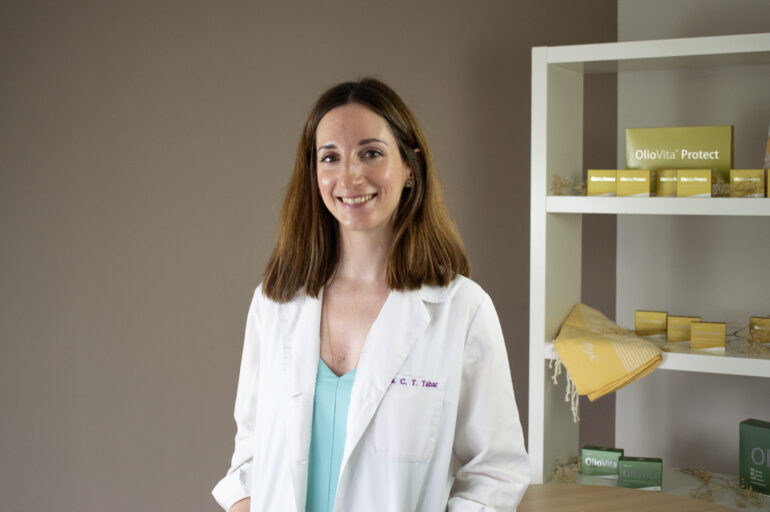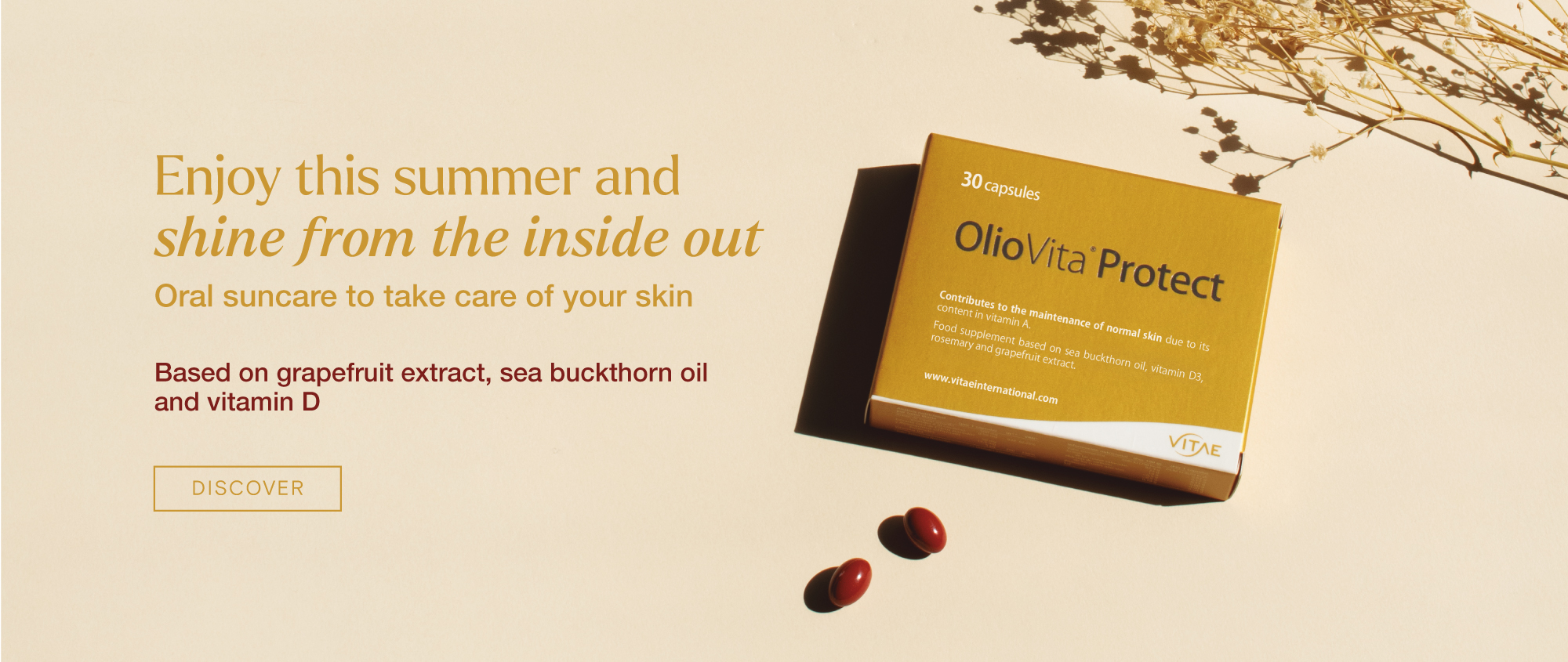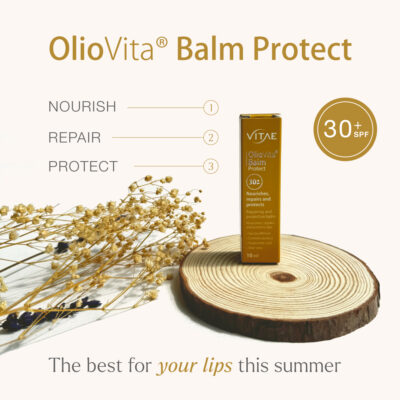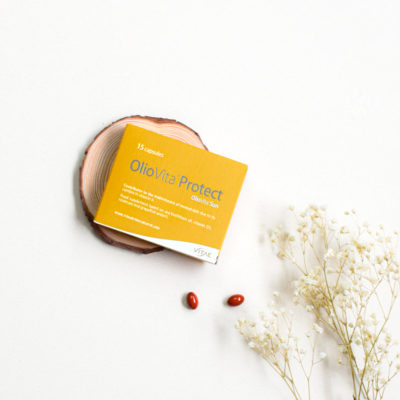During summer, temperatures are high and so are the sun radiations, causing skin damage, among others. In the following interview with Cristina Tabar, a pharmacist specializing in dermocosmetics, we will talk about the risks and recommendations to take care of our skin during summer time from the inside out.
What are the main risks for the skin when exposed to the sun without adequate protection?
Skin is our first coat. The skin is our first defense barrier and for this reason it has complex defense mechanisms. What’s more, if we look at its extension, it is the second largest organ, after the digestive system, the system responsible for 80% of our body’s immunity.
If we expose ourselves to the sun without protection (and by sun exposure I don’t mean days at the beach or pool, but every day of the year, because we are surrounded by sun 365 days a year), we are endangering the natural protection of the skin. When our skin is attacked by the sun, it oxidizes (and therefore becomes inflamed) and calls for help from our melanocytes, which are octopus-shaped cells responsible for the production of melanin. Melanin is the tanning pigment that is produced after sun exposure in higher phototypes and has “some protection” action. Pheomelanin or “shrimp color” is the pigment produced by the lighter phototypes after sun exposure and does not have any type of protection. In other words, the phototype is the classification of the skin according to its degree of pigmentation, being I the lightest (burns in 5 minutes) and VI the darkest (burns in 90 minutes). As you can see, all skins, whether they are darker or not, burn more or less quickly. That is why a quality photoprotection is essential.
In addition to losing that natural defense of the skin, if we repeatedly expose ourselves to the sun without protection, we will be more prone to suffer from skin cancer, its prevalence being higher than that of suffering from breast cancer. And if we look at a beauty level, well- photoprotected skin will always be healthier, more elastic, younger and more beautiful skin, since 4 out of 5 spots and wrinkles are caused by the sun.
What type of protection would Cristina Tabar recommend for people with sensitive skin or those prone to sun spots and sun allergies?
For me, the ideal topical sunscreen is one that, apart from having good filters (the most important thing), has to be pleasant to apply, because if you don’t fall in love with it, you won’t apply it. As for the filters, in addition to UVA filters (to prevent photo aging) and UVB (to prevent sun burn), which are the minimum required by law and which only add up to 5% of solar radiation, I would add many more things that I consider basic. Other very important filters would be IR (to avoid deeper burns and skin cancer), visible and blue light (to avoid spots), anti-pollution filter (to avoid skin inflammation), anti-radical filters (to avoid skin oxidation ), DNA repair agents (to prevent skin mutations), antioxidants (to reduce skin inflammation) and that have emollient and moisturizing active ingredients (to maintain the barrier function and prevent transepidermal water loss ).
In addition to all of the above, in the case of sensitive, sensitized or allergic skin, I would recommend the use of an oral sunscreen to reinforce the protective action, in addition to the use of polarized sunglasses, caps or hats, clothing with sunscreen and avoiding sun exposure in the central hours of the day, whenever possible.
What are the main differences between topical and oral sunscreens?
A topical photoprotector , as its name suggests, is one that you apply to your skin and for that reason it will only work where you apply it. Its action will always remain in the epidermis, which is one of the 3, the outermost layer of the skin.
Instead, an oral sunscreen has a systemic effect. In the case of being well formulated, it can reach the hypodermis, which is the innermost layer of the skin. This does not mean that an oral sunscreen replaces a topical one, but rather that it complements it.
What is the best way to treat sun spots after they have appeares?
Sun spots are very easy to create and very difficult to treat, for this reason a good topical and oral photoprotection is essential to avoid new ones and treat the ones we already have. Since the spots occur in the dermis or second layer of the skin, we will need a nutricosmetic rich in antioxidants that reaches there to treat the root of these spots and prevent their new appearance. All this will be included in a beauty routine with serums and/or depigmenting and exfoliating creams , which we will design for each skin.
What ingredients do you recommend to prevent or treat sun spots and allergies, in addition to moisturizing it?
When I think of a nutricosmetic to have healthy and beautiful skin, the first thing I think of is omegas, and especially omega 7, which is responsible for moisturizing skin and mucous membranes. A very interesting active ingredient due to its multiple properties is sea buckthorn, an excellent source of omega 7. In addition, I will always look for the formulation to contain antioxidants to reduce inflammation of the skin and for it to be uniform in texture and color, such as the extract of grapefruit and rosemary extract rich in rosmarinic acid. If we want to curl the loop, and going back to the first question, if we want to improve the natural defense function of our skin, vitamin D is a great ally.
What nutricosmetic would Cristina Tabar recommend for this summer and why?
Without hesitation, I would choose OlioVita Protect because in addition to the clinical studies that support this product, the people who try it always repeat it. OlioVita Protect reaches the hypodermis performing a total repair of the skin in just 24 hours. With this product you will have a skin with glow , light, hydrated, elastic, beautiful, protected and in the event that you tan, it will be of quality and will last longer, since the skin will be nourished from the inside. Include it in your beauty routine and you won’t regret it.
Thank you very much Cristina Tabar for this magnificent interview and for helping us to make visible the importance of caring from the inside!







